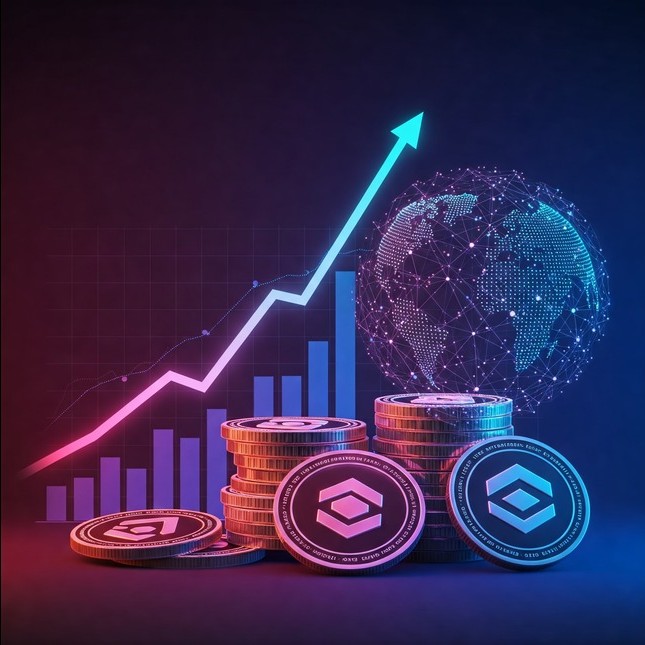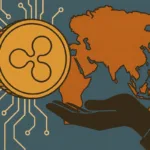Imagine traditional money, then picture a world without physical currency – just digital currency. This revolutionary concept first materialized with Bitcoin, the original ‘digital dollar’. But just like the early days of the internet, it soon became clear that there could be other forms of digital money, each with unique features and intended uses. This is where altcoins come into the picture. The term itself is a simple combination of ‘alternative’ and ‘coin’, referring to any cryptocurrency that isn’t Bitcoin.
The genesis: Life after Bitcoin
Bitcoin made its debut in 2009 and stood alone as the sole cryptocurrency for a period. However, innovative developers quickly began exploring ways to enhance Bitcoin’s fundamental design or to create entirely new digital currencies tailored for specific applications.
The first significant wave of altcoins emerged around 2011. Namecoin was a pioneering example, with the ambitious goal of creating a decentralized internet naming system – similar to the domain names we use daily, but free from centralized control. Another crucial early altcoin was Litecoin, envisioned as the ‘silver’ counterpart to Bitcoin’s ‘gold’, promising faster transaction speeds and a different approach to the mining process. These initial altcoins were often built upon Bitcoin’s original codebase, incorporating various modifications.
Newsletter
Get weekly updates on the newest crypto stories, case studies and tips right in your mailbox.
Key milestones: Diversification and innovation
As the cryptocurrency landscape expanded, so did the diversity and sophistication of altcoins. Here are some pivotal milestones in their evolution:
- The rise of Ethereum (2015): This marked a paradigm shift. Ethereum transcended the concept of simple digital money by introducing smart contracts. These are essentially self-executing digital agreements coded onto the blockchain. This groundbreaking innovation empowered developers to build decentralized applications (dApps) on the Ethereum network, unlocking possibilities far beyond basic payments. Think of Ethereum not just as a digital currency, but as a foundational digital infrastructure for building a new generation of applications.
- The ICO boom (2017): Initial Coin Offerings (ICOs) became a popular mechanism for new altcoin projects to raise capital. Investors would purchase newly created digital tokens in these early-stage ventures. While this period fueled significant innovation, it was also marred by numerous failed projects and outright scams.
- The emergence of diverse categories: Over time, altcoins branched out to serve distinct purposes, leading to the formation of various categories:
- Payment coins: Such as Litecoin, designed to offer faster or more cost-effective transactions compared to Bitcoin.
- Utility tokens: Grant users access to specific products or services within a particular platform (akin to a digital membership pass).
- Security tokens: Represent ownership in real-world assets, similar to traditional stocks, and are often subject to regulatory oversight.
- Stablecoins: Engineered to maintain a stable value, often pegged to a traditional currency like the U.S. dollar, aiming to provide the benefits of crypto with reduced price volatility.
- Meme coins: Frequently based on internet jokes or memes (e.g., Dogecoin, Shiba Inu), their value is often driven by community enthusiasm and speculation.
- DeFi tokens: Power the ecosystem of decentralized finance applications, enabling services like lending, borrowing, and trading without traditional intermediaries.
- NFT-related tokens: Integral to Non-Fungible Token (NFT) marketplaces and broader NFT ecosystems.
- Technological advancements: Many altcoins have focused on enhancing the underlying blockchain technology itself, striving for improvements such as faster transaction throughput, lower transaction fees, enhanced privacy features, or more energy-efficient consensus mechanisms. Notable examples include Solana (renowned for its speed) and Monero (emphasizing privacy).
Altcoins today: A dynamic and expanding universe
The altcoin market today is a vast and continuously evolving landscape, encompassing thousands of distinct projects, each with its own unique technology, community, and intended applications.
- Market size: The combined market capitalization of all altcoins is substantial, although it typically fluctuates in tandem with the broader cryptocurrency market and remains smaller than Bitcoin’s overall market value. As of April 16, 2025, the total market capitalization of all cryptocurrencies is approximately $2.7 trillion, with altcoins constituting a significant portion of this figure.
- Continued innovation: Development teams are constantly pushing the boundaries of what’s possible, focusing on areas like improving scalability (the ability to handle a larger volume of transactions), enhancing interoperability (allowing different blockchains to communicate seamlessly), and expanding real-world use cases.
- Regulatory scrutiny: Governments worldwide are increasingly focusing on the cryptocurrency market, including altcoins. The evolving regulatory landscape can significantly impact the adoption and utility of various altcoins.
- Adoption challenges: While some altcoins have achieved significant adoption and demonstrated real-world utility, many still face hurdles in achieving widespread acceptance. Factors such as price volatility, technical complexity, and intense competition can impede their progress.
- The ‘altcoin season’: You might encounter the term ‘altcoin season’, which refers to periods when many altcoins experience significant price surges, often outperforming Bitcoin. These periods are influenced by various factors, including market sentiment and the flow of capital within the cryptocurrency space. Currently, in mid-April 2025, the market is experiencing some volatility, and investors are keenly observing for the next potential ‘altcoin season’.
Multifaceted ecosystem of digital assets
In essence, altcoins represent the continuous innovation and diversification within the realm of cryptocurrency. What began as simple alternatives to Bitcoin has matured into a complex and multifaceted ecosystem of digital assets, each with its own distinct purpose and underlying technology. Despite the inherent volatility and risks associated with the market, altcoins continue to drive the evolution of decentralized digital technologies.










